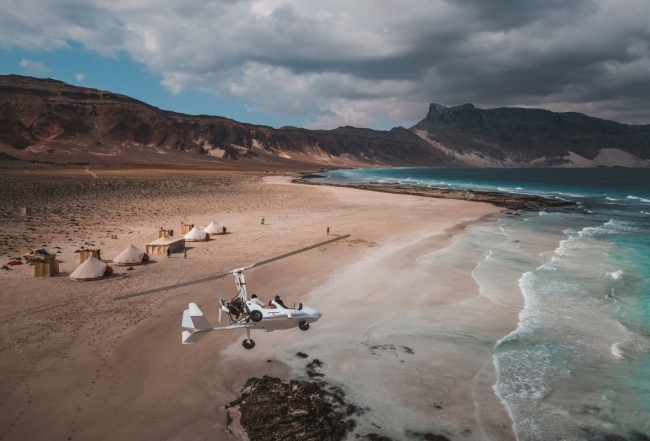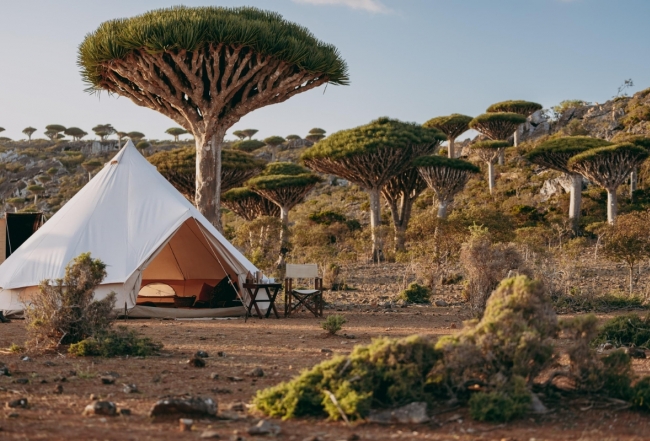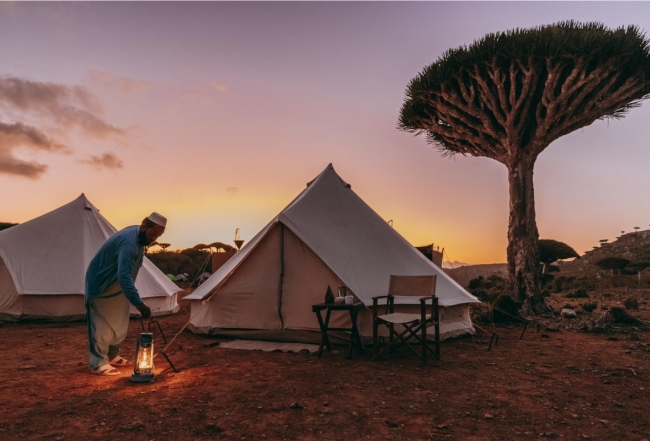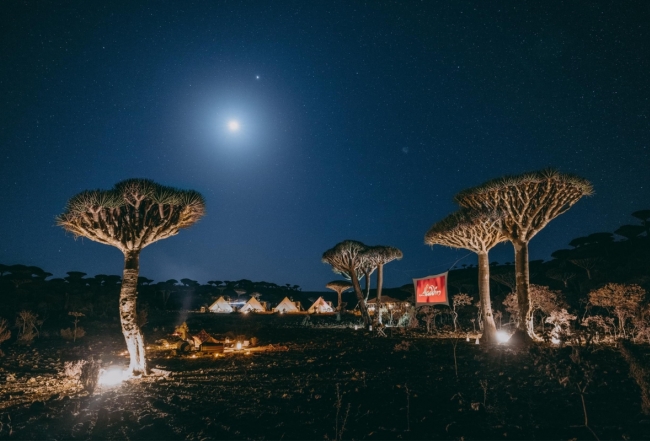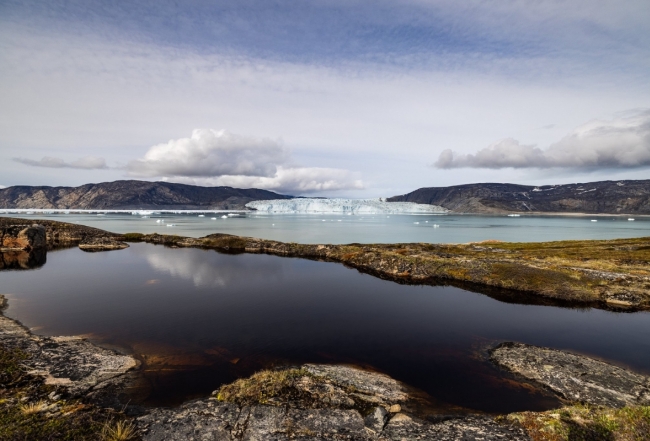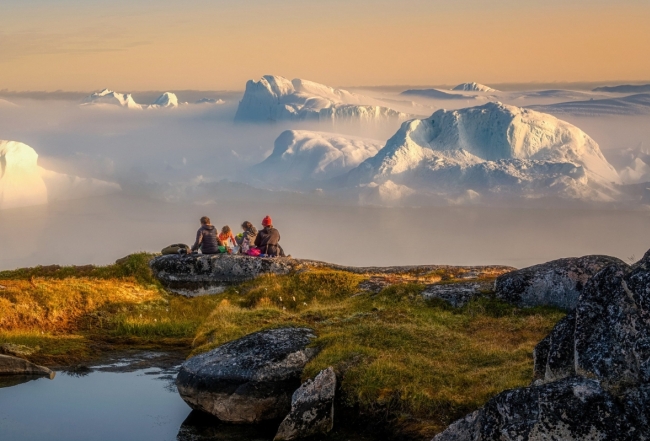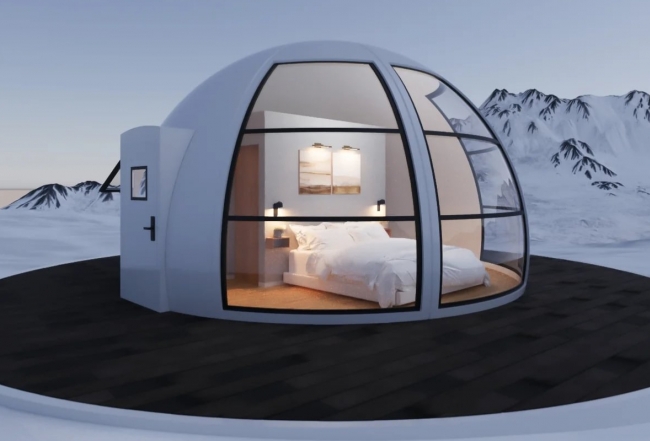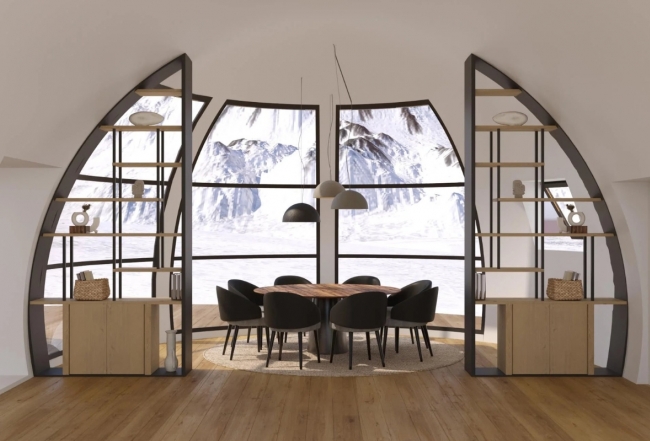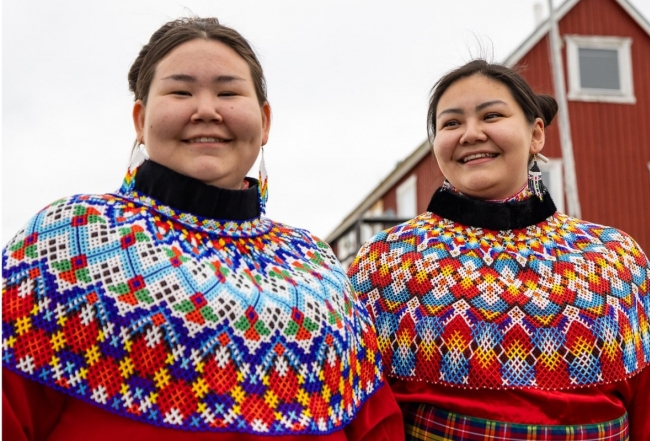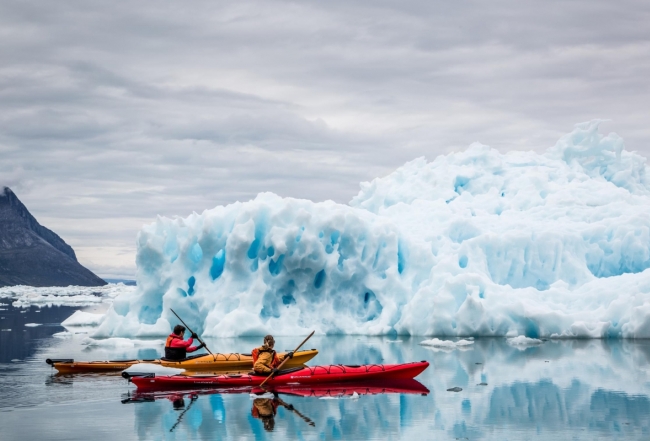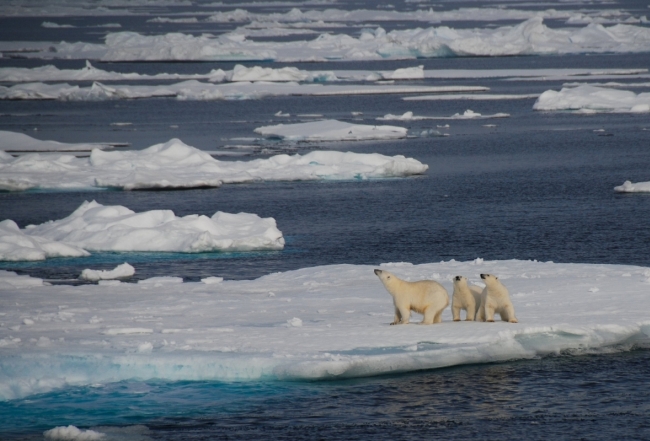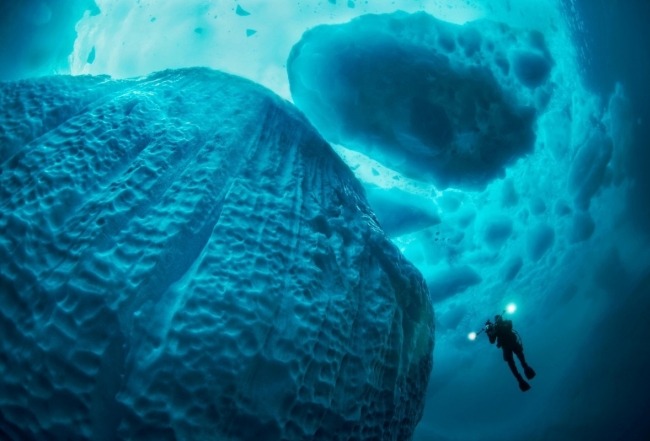How the One Percent Do Camping - Under the Stars from Socotra to Greenland
It’s time to forget everything you once knew about camping. For the one percent, the pastime takes on a whole new meaning, with hotel-standard bedrooms, Michelin-level dining and spectacular set-ups in unexplored destinations.
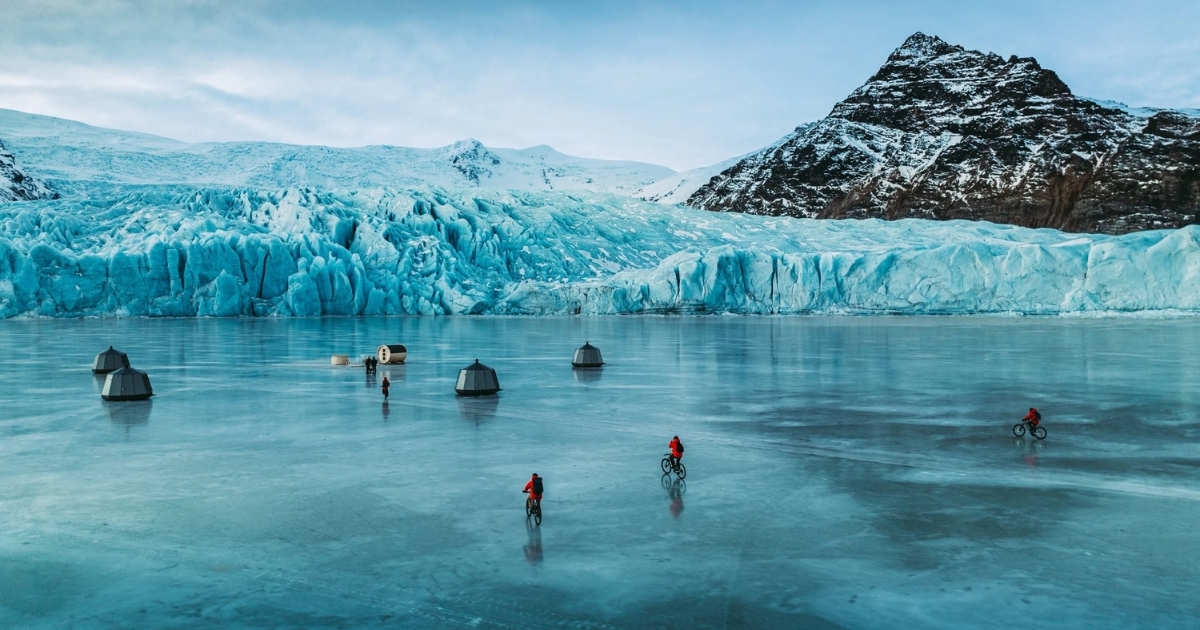
Luxury adventure travel company Cookson Adventures is a pioneer of extreme camping. In its quest to create irreplicable, one-of-a-kind experiences for its clients, the company has built pop-up camps in incredible locations across the globe – many of which were previously off-limits. These have included camps on a frozen lake on the edge of the Arctic Circle, on the top of a volcano in the Galapagos, in a dragon-blood tree forest in Socotra and deep in an underground cave system in Vietnam.
And these aren’t your standard camp sites. The planning and infrastructure that goes into each set-up is incredible – and often incredibly complex. Instead of flimsy tents, you can expect sturdy constructions that are heated, weather-proof and even bear-proof, where required. They also feature all the creature comforts you’d expect from a hotel – and sometimes even more – from en-suite bathrooms to pop-up saunas and outdoor cinemas.
“It's a bespoke camp just for you; it’s like art,” says Nick Davies, Managing Director at Cookson Adventures. “The camp is made for you and when it's gone, it's gone, and no-one else can replicate it. People really like the concept because it offers something a bit different. They like an experience that is back to basics in some ways but still comfortable.”
When it comes to activities, each trip is tailored to the interests of the group, and experts such as adventurers, dive masters, wellness practitioners and even astronomers are brought in to guide guests through their bespoke itinerary.
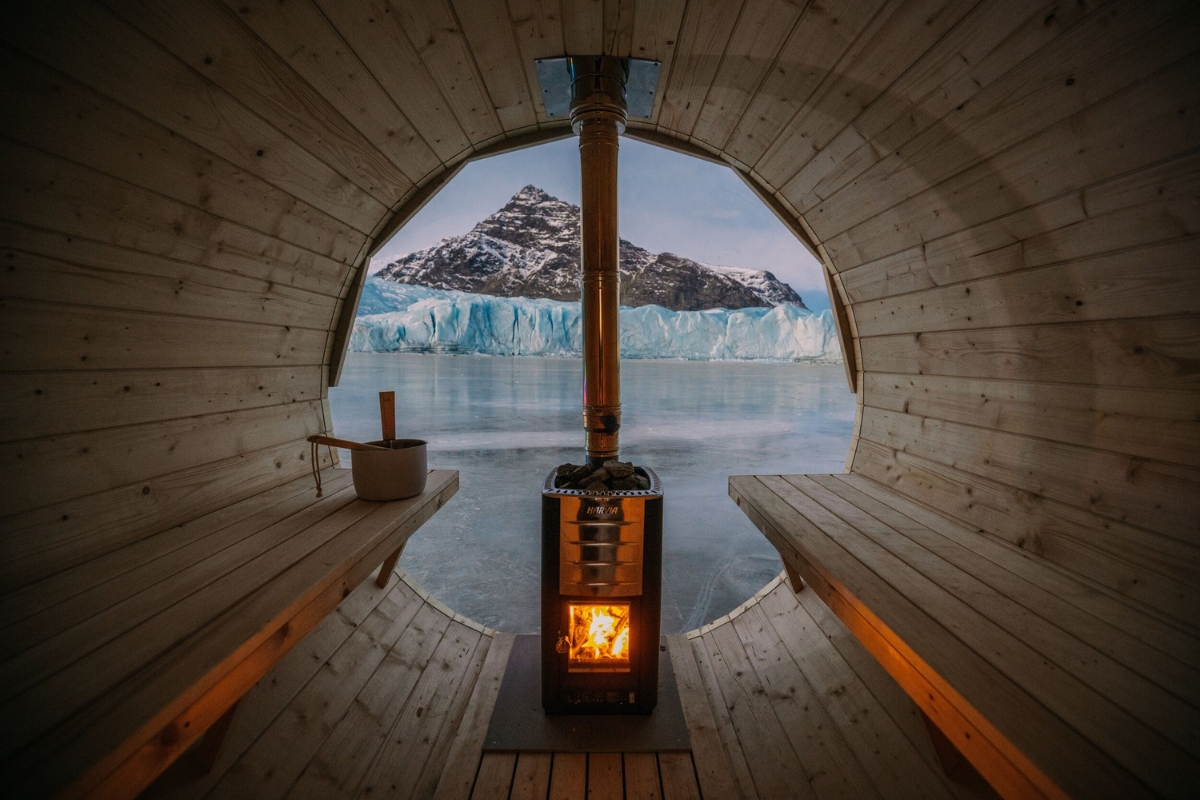
For one client’s 35th birthday, Cookson Adventures organised a wellness-themed camping experience on Iceland's biggest ice cap. “It freezes over in winter, so we had this cool idea to set glass igloos on the ice,” says Archie Muir-Mackenzie, Head of Projects at Cookson Adventures. “They're officially classed as boats as they can float on water; so they are completely self-contained capsules that can be dragged on and off the ice without leaving a trace. There’s zero footprint and no damage to the wider environment.”
“We had to buy thee huts in Finland, import them into Iceland because they didn't exist. They weighed around two tons, and we drove them out across the ice for three kilometres,” he adds. “Three days before the trip, the client decided they wanted a sauna, so we've found one, put some skis on it, and dragged it out there with a hot tub. We also cut a plunge pool in the ice and used the ice blocks to build a bar. What the client wants, the client gets.”
One of Cookson Adventures’ first camping set ups was in Vietnam in the biggest cave system in the world. During the multi-day trip, the group took multiple camping stops to ensure that they could explore as much of the subterranean world as possible. “We were the first company to take a group through there,” says Davies.
Another next-level camping experience was in Socotra, an island off Yemen that’s so remote that it takes three days on a dhow from the mainland to reach it. Known for its dragon-blood trees, Socotra was closed to the public for many years, opening for a short period before the current crisis rendered it inaccessible again. During that window, Cookson Adventures planned three incredible trips for clients.
“It’s island that time forgot,” says Muir-Mackenzie. “Other people have been there, but we were the first people to do a luxurious way. There are no hotels there, but we were able to bring in a great chef, comfortable tents and showers. It was reasonably basic, but we brought everything we could, including experts.”
Socotra is home to beautiful beaches, mountains and forests, so the team set up four tents on the coast and four in the mountains so guests could experience both locations. Activities were then tailored to each group.
“One group was very into Islamic manuscripts, so we brought in an anthropologist who’d lived there 20 years ago. She gave us access to a village that nobody else has been before, which was really cool. We also took camel rides up into the mountains and explored caves to look for archaeological remains,” says Muir-Mackenzie. “Another group wanted adventure, so we brought in dive masters and organised diving and kite surfing, which is excellent in Socotra. We also had a helicopter take us around.”
The next project in the pipeline is camping on the southern tip of Greenland. “This is a project we've been looking at for a while,” says Muir-Mackenzie. “Greenland is epic. It's easier to get to than Antarctica and it’s still relatively unexplored. You have amazing heliskiing there and a lot of first ascents as not many people have explored the area. There’s also great fishing, kayaking and diving – we’ve found underwater stalactites that you can dive around, which is an unusual natural phenomenon. It’s also one of the only locations in Greenland where you can find hot springs.”
The area is also known for its unique population of polar bears which have adapted to hunt on freshwater glacial icebergs, allowing them to hunt much later into the season. “It’s completely new climate change adaptive behaviour,” says Muir-Mackenzie.
In many of its trips, Cookson Adventures tries to pair its clients with an immersive conservation-led experience. In this case, they may get the opportunity to shadow a a local conservation project that’s monitoring these polar bears and their new behaviour.
“We've been chatting to them to see if we can have some guests come along,” says Muir-Mackenzie. “In the spring, they fly down the fjords with a helicopter at low altitude and dart the polar bears out of the windows. They then go down and take samples, weigh them and tag them. We plan to loan them heli hours and in exchange, we'll put our clients on like the front lines so they can see the day-to-day of what the scientists are doing to protect the species.”
The camp itself will be made up of five custom-built domes that are filled with hotel-standard amenities and designed to withstand snow up to 30 feet and winds of 150 km per hour. “And don’t worry, the camp is polar bear proof!” Muir-Mackenzie says.
The project is so unique that the team is exploring avenues to extend its lifecycle, such as-re-purposing the camp as a base for local scientists and researchers. “Currently, we have permits for two months but we would like it to be a permanent camp, which we think would bring a lot to the local economy,” says Muir-Mackenzie. “There’s no other hospitality operation like this.”
This desire to support local communities is a prime example of Cookson Adventures’ ethos which aims to give back to destinations while creating memorable experiences for guests.
*Images copyright Cookson Adventures

